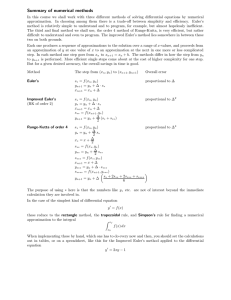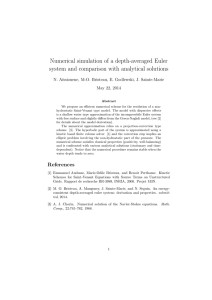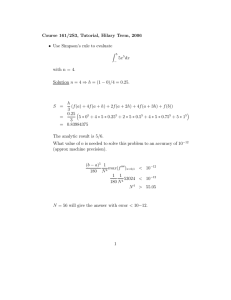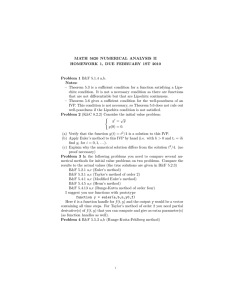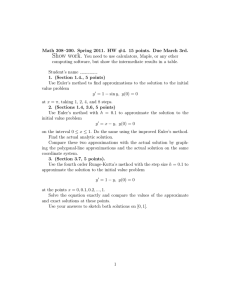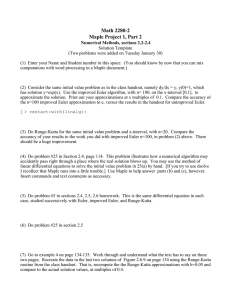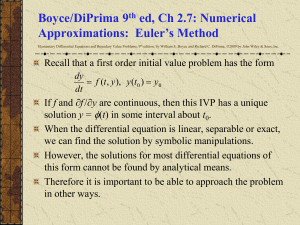Euler's Method Example: Numerical Differentiation
advertisement
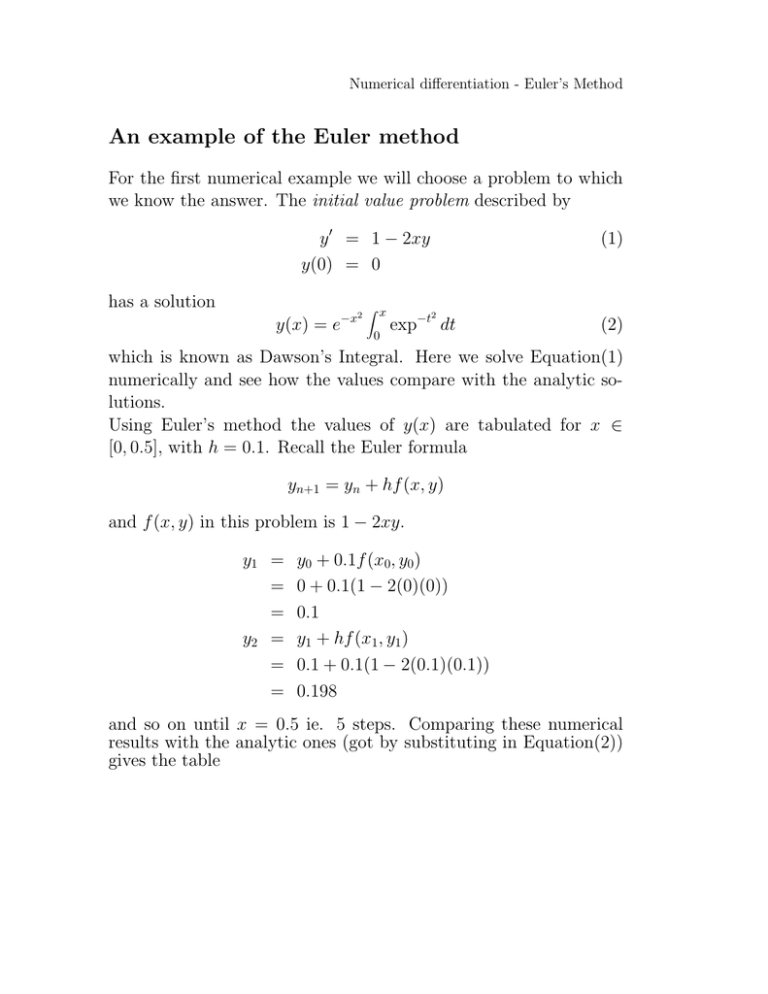
Numerical differentiation - Euler’s Method An example of the Euler method For the first numerical example we will choose a problem to which we know the answer. The initial value problem described by y 0 = 1 − 2xy y(0) = 0 has a solution y(x) = e−x 2 Z x 0 (1) 2 exp−t dt (2) which is known as Dawson’s Integral. Here we solve Equation(1) numerically and see how the values compare with the analytic solutions. Using Euler’s method the values of y(x) are tabulated for x ∈ [0, 0.5], with h = 0.1. Recall the Euler formula yn+1 = yn + hf (x, y) and f (x, y) in this problem is 1 − 2xy. y1 = = = y2 = = = y0 + 0.1f (x0, y0) 0 + 0.1(1 − 2(0)(0)) 0.1 y1 + hf (x1, y1) 0.1 + 0.1(1 − 2(0.1)(0.1)) 0.198 and so on until x = 0.5 ie. 5 steps. Comparing these numerical results with the analytic ones (got by substituting in Equation(2)) gives the table xn 0.0 0.1 0.2 0.3 0.4 0.5 yn y(xn ) (numerical result) (analytic result) 0.00000 0.00000 0.10000 0.09934 0.19800 0.19475 0.29008 0.28263 0.37268 0.35994 0.44287 0.42444




